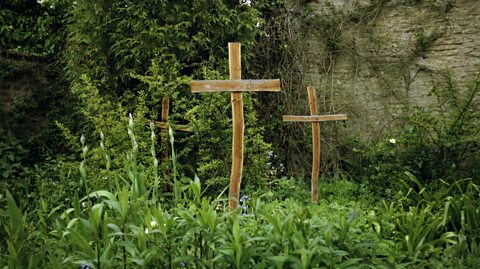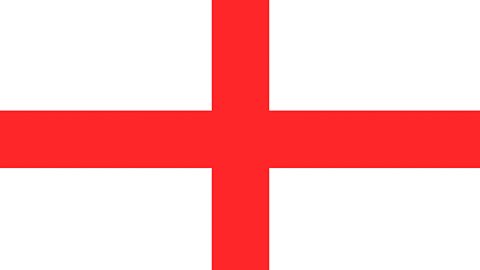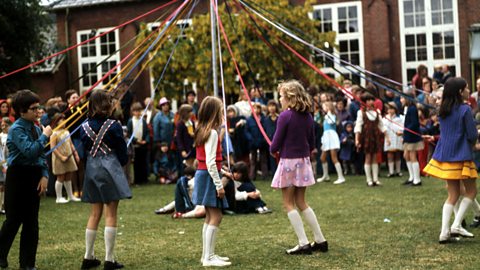Themes: the Easter narrative - Good Friday and Easter Day
Before the programme
- Discuss with the class: can stories be sad and happy at the same time? How?
- Look at the Easter garden and talk about the symbolism of the cross at Easter time.
- Which are the happy / sad parts of the Easter story?
- Do you know other stories that have sad parts and happy parts?
Programme content:
- Welcome and introduction: Ben is back at Abbey Hey Donkey Sanctuary with some young friends who are off for a ride on the donkeys.
- Song: âEaster timeâ (Come and Praise, Beginning, no. 55). Encourage the children to join in with as much as they can.
- Feature: Ben is back talking to Debbie at the Donkey Sanctuary and today he is hearing more about the donkeysâ stories.
- Story: Easter surprise. An adaptation of the Easter narrative by Rachel Boxer. The traditional story of the first Easter Day is retold from the point of view of Mary, one of Jesusâ friends. She goes to visit Jesusâ tomb early one morning and finds that something very surprising has happened.
- Reflection: on joy and sadness both being a part of the Easter story and of life. Ensure everyone is listening carefully.
- Prayer: Thanking God for the contrasting parts of the Easter story and of Jesusâ life. The children can listen or join in with âAmenâ at the end if they wish to make the prayer their own.
After the programme:
Talk about the story
- Talk about the different emotions that Mary (and the others in the story) felt at different points during the narrative - can the children identify times in their own lives when they have felt sad / confused / scared / excited�
- Why do you think some of Jesusâ disciples ran away? What might you have done?
- Why do you think Mary visited the garden tomb that morning?
- Mary said that birds singing usually made her feel glad to be alive. Which things make you feel the same way?
- Who do you think the men in white were?
- Why do you think Mary didnât recognise Jesus at first?
Follow-up activities:
In groups, make a list of what would need to be gathered to make an Easter garden, with areas that relate to the Good Friday and Easter Sunday parts of the narrative. Then make the gardens, label the different parts and then use them to tell the story as a group.
Look at famous works of art that depict the different events that are a part of the Easter narrative and put them in story order, or sort them into happy events / sad events. Many appropriate paintings can be found on the National Galleryâs website.
Talk about surprises. Have any of the children ever had a surprise? What was it? Was is a nice surprise or a nasty surprise? Are all surprises nice? Do they like âniceâ surprises? Have the children ever had a surprise that was not quite what it seemed? Relate this back to the story and talk about all the surprises in the story.
Make and sample Hot Cross Buns. You can find various recipes on the ±«Óătv Food and other websites. What connection do they have with the Easter narrative? Is eating hot cross buns a happy or sad event? Or is it perhaps both?
Click to display the image full size

KS1. Saint George's Day. audio
Ben finds out about St George - an early Christian in the time of the Roman Empire.

KS1. May Day. audio
Join Ben Faulks for a programme all about May Day. Celebrating the start of summer; learning from the past, and the people who can help us to do that.

KS1. Rogation Sunday. audio
Join Ben Faulks for a programme all about Rogation Day. Family relationships - parents.
